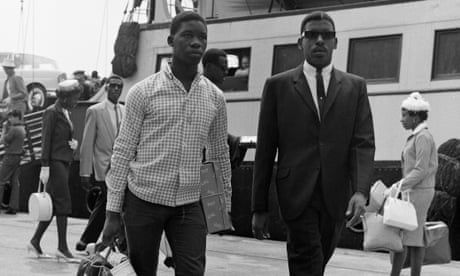
This elegiac novel tracks a West Indian man’s life in London over decades, exploring the emotional cost of leaving home and being met by hatred and rejection
Will the last one out please turn off all the lights?” This was the joke that spread across the West Indies in the 1950s and 60s as young adults succumbed to “England Fever” in their determination to migrate to Britain. Having saved enough for his ticket from Saint Kitts, Victor Johnson, the protagonist of Another Man in the Street, has his finger on the light switch at the start of Caryl Phillips’s elegiac novel. From his debut, 1985’s The Final Passage, Phillips has steadfastly focused on the precarious lives of migrants in novels such as In the Falling Snow and in his hybrid work Foreigners: Three English Lives. His books have stood out against other accounts of the Windrush generation’s stoicism, exploring the emotional cost of leaving home and being met by hatred and rejection.
The transatlantic journey was a rite of passage for former “children of empire” – now “citizens of the Commonwealth” – on their way to an imagined homecoming in bombed-out, postwar Britain. This has previously been mapped in novels such as Andrea Levy’s Small Island and Sam Selvon’s The Lonely Londoners. But Phillips’s refreshing approach in Another Man in the Street is to ask the question rarely posed: what happened to these pioneers over the decades to come? It’s as if the Kittitian-born novelist has taken a character from Selvon’s seminal work and tracked him over 50 years, charting his progress and consequential missteps.
Continue reading...